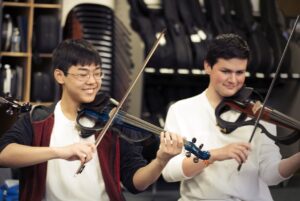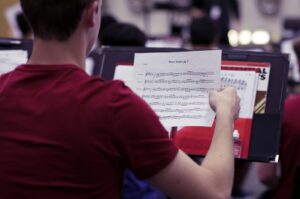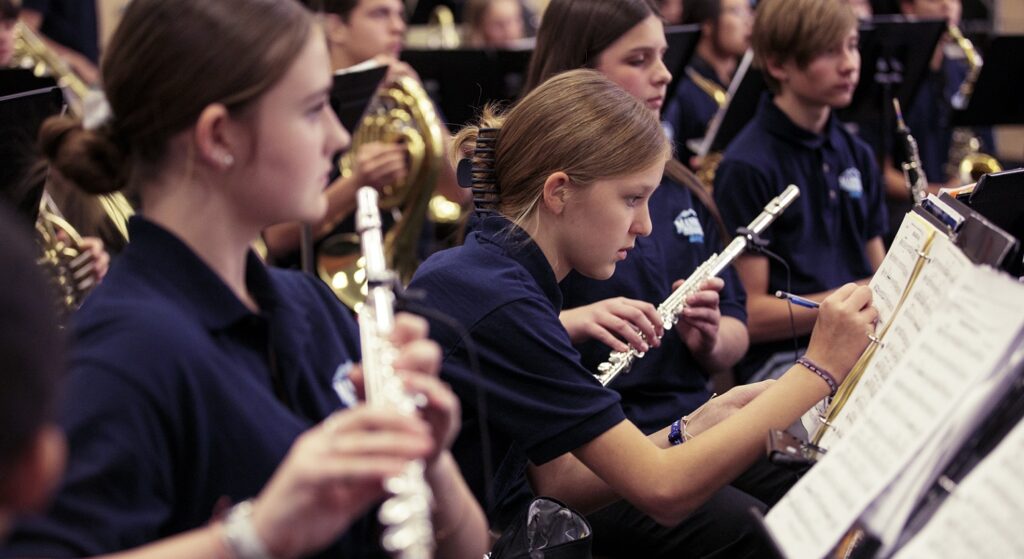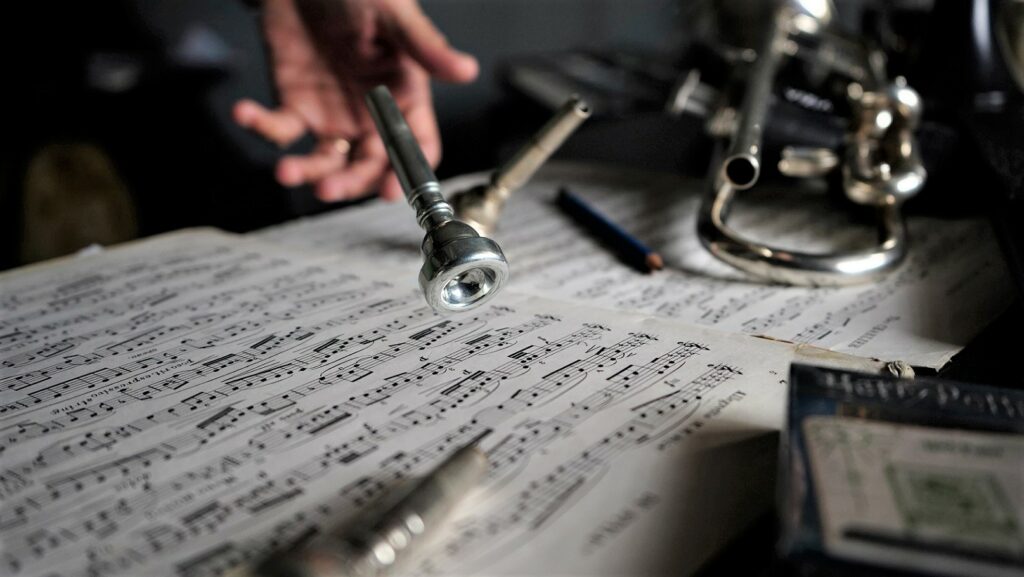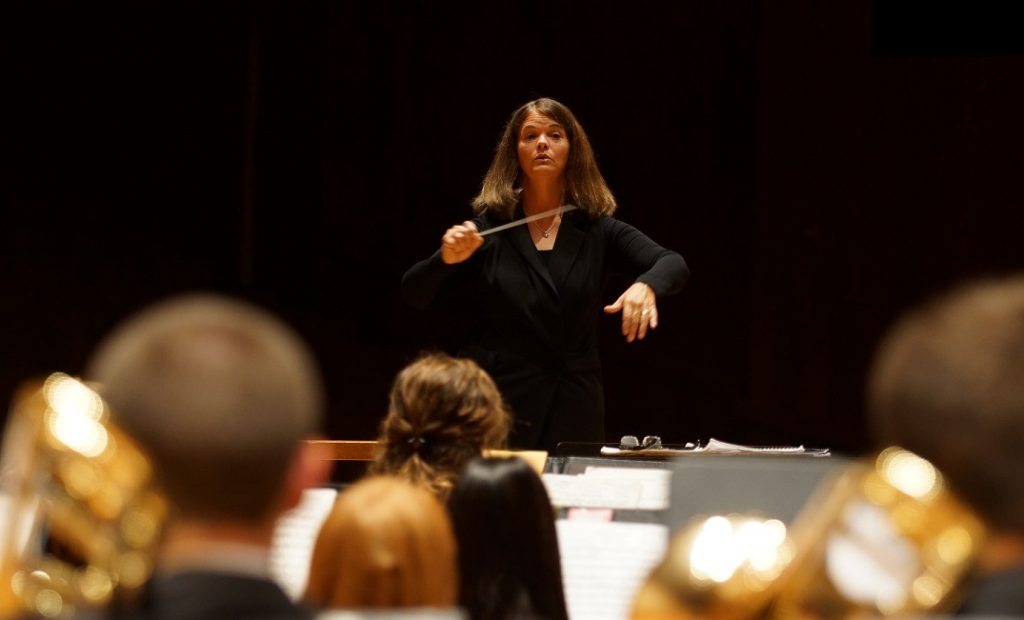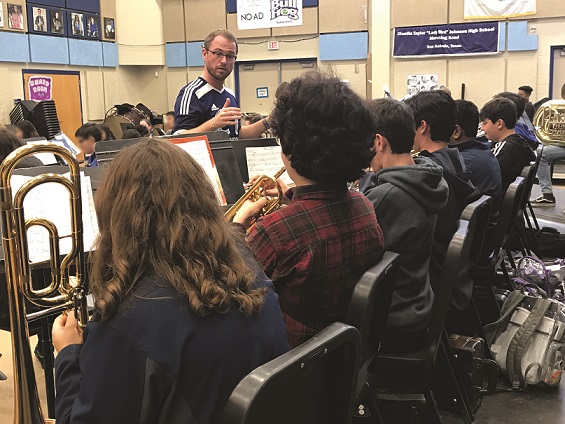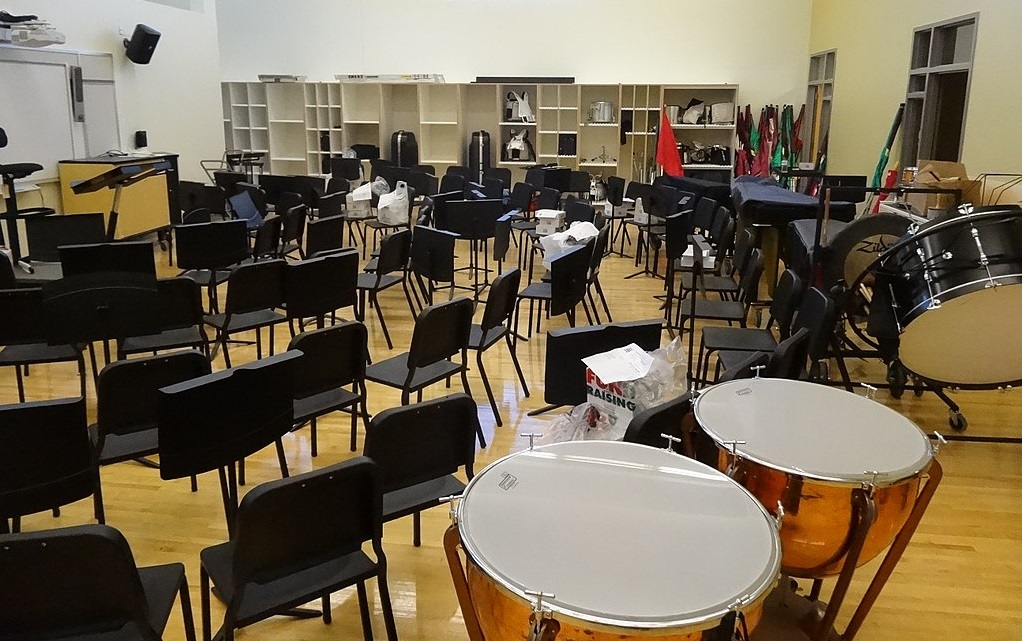Tagged Under:
Today’s Tasks that Pay off in May
Elevate your music class from novice to virtuoso with these five practical, long-term strategies that maximize rehearsal time and transform student musicians.
Music education has always been about the long game and less about the quick wins. While instant gratification can be enticing, I’ll always choose the joy of long-term accomplishments. Here’s how you can set up your class for lifelong success.
Always Address Tone
We’re always swamped during rehearsal, but if we wrap up early, it’s back to tone. Think of it as building musical athleticism. Forming an embouchure, holding a bow or singing with proper breath support is physical. The mechanics of good tone involve real muscle and airflow. No shortcuts allowed.
Treat your musicians like athletes and understand that if you want great tone at the spring concert, then you must start your physical conditioning now. Rushing this process isn’t just ineffective, it’s potentially damaging to the musicians’ physical wellbeing. So, plan accordingly, and commit to the long game of developing tone.
Try These Practical Tips
- Play or sing for your students regularly; let them hear it straight from you.
- Use online resources, but don’t just settle for anything. Find a credible source, such as university or professional recordings, and stick with it. I like to use either the Bravo Music’s Winds Training Series DVDs or the London Symphony Orchestra YouTube videos.
- Work breathing exercises into your daily routine. Tone starts with air.
Insist on Intonation
We focus on intonation from the first day of class, and in many instances, we begin during the summer through extra rehearsals. Without this early commitment, my ensemble will not be able to perform in tune effectively. The process is layered — first, we work on achieving a characteristic tone, followed by addressing balance among the instruments. Only then do we dive into the specifics of tuning unison pitches.
There’s a camp of people who argue against using electronic tuners, advocating instead for “listening.” While I’m a big proponent of developing listening skills, I see the value in attaching tuners to each student’s instrument, especially during the early phases of rehearsal. My ears may not be perfect, but they’re still more trained than those of the students. Consequently, they often don’t know what good intonation sounds like until we collectively produce it and internalize that sound. It becomes a lightbulb moment when I can get just two students to play in tune, which gives them a benchmark, a goal.
By the time December rolls around, the majority of students have a tangible understanding of what “in tune” really means. Why the push to start so early? We’re back to our musical athletes. Certain muscular techniques — like tightening or relaxing the embouchure to alter pitch — require time to develop. These are not skills that can be rushed without risking poor habits or even physical strain. Therefore, an early start on intonation is crucial.
Try These Practical Tips
- Utilize the resources at your disposal: employ tuners, drones and other tools to refine pitch.
- Conduct a pitch inventory in pairs for targeted improvement. Designate a space like a practice room where two students can bring their instruments, a tuner and a note sheet. One student plays while the other observes the tuner and records the pitch accuracy — sharp, flat or in tune. This exercise makes students aware of their individual pitch tendencies.
- Incorporate specialized tools like tonal harmony software or the Yamaha Harmony Director to teach intonation. Pairing these resources with instructional materials like the Bravo Music’s Winds Training Series DVDs can enhance learning.
- Start by tuning a single pitch each day and then progress to tuning an entire chord daily. This gradual approach helps students better understand what being “out of tune” really means.
- Use the “two tuners trick” to improve pitch perception: Set up two tuners to produce a tone simultaneously, one at 430 hz and the other at 440 hz. Gradually increase the frequency on one tuner by one hertz at a time. Have students raise their hands when they no longer hear the wavy sound produced by the conflicting pitches. This exercise is effective in teaching students to recognize out-of-tune waves.
Start Sightreading Every Day
Encourage your students to sightread a new piece of music every day. I know that time is a constraint. However, the dividends of consistent, daily sightreading are invaluable.
Investing in sightreading during the fall months — October, November, December — eases the fears and anxieties your musicians might have about new music come January and February. The task becomes less daunting, and your students will eagerly take on new pieces. Plus, incorporating regular sightreading into your routine can serve as a refreshing change of pace, breaking up the potential monotony of lengthy concert preparation cycles.
Try These Practical Tips
- Start small: Dedicate one day a week as sightreading day or focus on one new piece a week over multiple days. Aim to increase the frequency over time.
- Utilize resources: Tap into sightreading books or methods, whether from print or digital retailers. Most books, such as Tradition of Excellence or Essential Elements, provide some sightreading or rhythm reading examples in the back. If you use MakeMusic (formerly SmartMusic) or Musicfirst, the sightreading examples they supply will work well.
- Switch it up: Have musicians swap parts. For example, part 1 can play part 2, part 2 can play part 3 and so on. Trumpets might tackle clarinet parts (adjusting for range) and vice versa. Get creative — there’s no one-size-fits-all approach to help students improve.
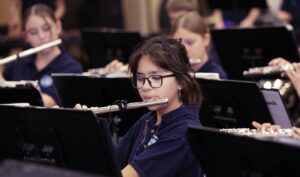
Maintenance Matters
I drive a 2003 Toyota that has its share of minor issues, but it’s a reliable vehicle overall. While I’m no car expert, I address mechanical problems as they arise and prioritize preventive maintenance. Given that I’m driving an older model, I understand the importance of frequent oil checks and having a professional inspect various components like tires and spark plugs every so often.
In the same vein, maintaining our musical instruments — and yes, that includes voices — instills discipline and responsibility in our students. It also minimizes unpleasant surprises, like a clarinet spring breaking just moments before a performance. Take time during class to remind students to oil and grease their instruments regularly. For vocalists, emphasize the importance of vocal rest, staying hydrated and avoiding straining activities like screaming, whispering or even speaking loudly.
Try These Practical Tips
- Keep a visible chart with a maintenance schedule for instruments so everyone knows when it’s time for a tune-up.
- Reach out to parents or, even better, partner with an instrument repair company to send technicians for periodic check-ups, akin to doctor’s visits.
- Incorporate a quick “health check” at the beginning of each week’s practice. Have students do a basic rundown of their instruments or vocal cords, noting any issues like sticking valves or vocal strain, so they can be addressed before they become larger problems.
Facing Fears
I don’t mean to get psychological here, but I know from conversations with colleagues that a lot of us have things that we’re either afraid of or that we simply avoid. Maybe you’re hesitant to focus on a difficult music section, reluctant to rehearse an unpopular piece or nervous about asking for more funding. Do your due diligence — know your facts and prepare accordingly. Then, get real with yourself: Make a list of what you’re avoiding. Depending on your comfort level and the stakes involved, you can either approach these issues cautiously or jump in with both feet.
I had my own set of fears — inviting clinicians (too soon, we’re not ready), isolating sections or individuals during practice (I don’t want to single anyone out, we’re too busy), and petitioning for additional funding (it’s a tight budget, they’ll likely refuse). Recognizing these fears was a game changer; ignoring them was no longer an option. Facing them head-on has improved me and my ensemble.
Try These Practical Tips
- Carve out some time to reflect on what you tend to avoid during rehearsals. Write down your reasons for avoiding these things. Next, ask yourself if others are doing these things and succeeding. If so, question why you think you can’t. Keep in mind that we often see what we expect to see when looking at others’ situations — not the whole truth.
- Depending on your personality, try a different approach to confronting these issues. If you’re usually hesitant, try diving right into a smaller task. If you’re the type to act quickly, maybe slow down and think it through before taking action.
- Regularly reassess your list of fears or avoidances. Once you’ve tackled one, it’s easy to replace it with another one without even noticing. A periodic review ensures that you’re constantly evolving, both as an educator and as a musician.











